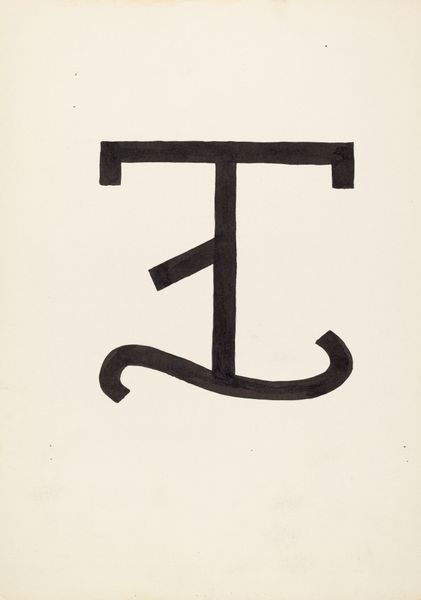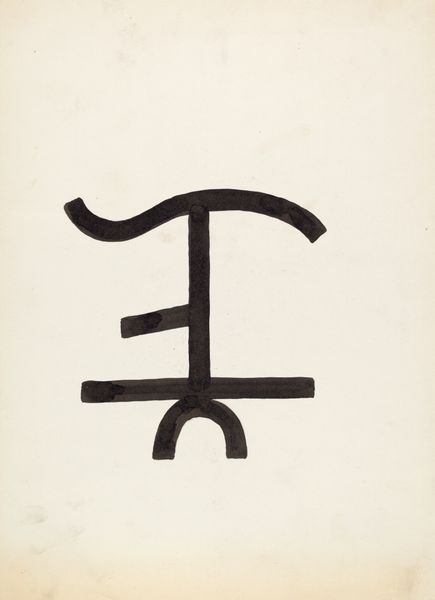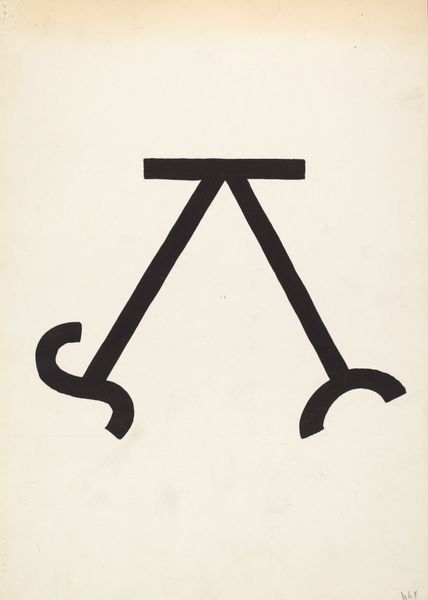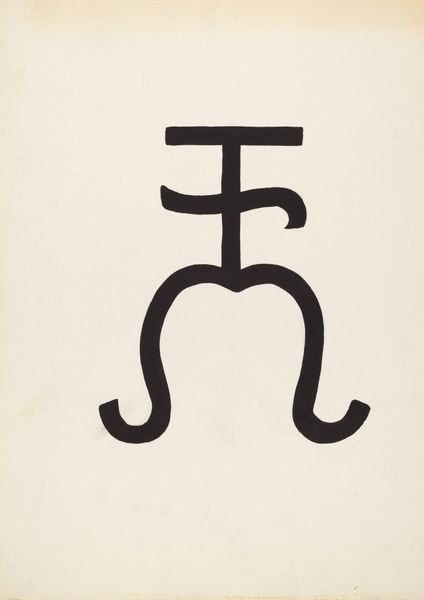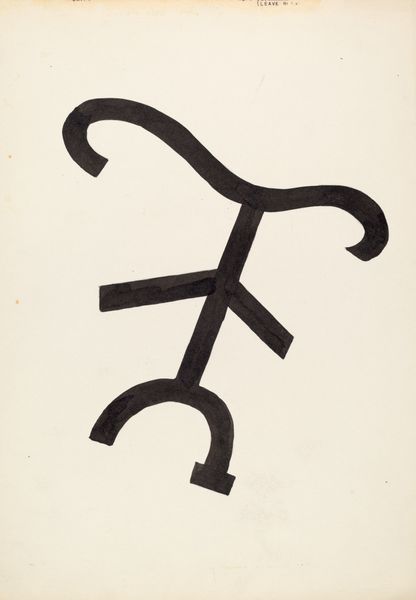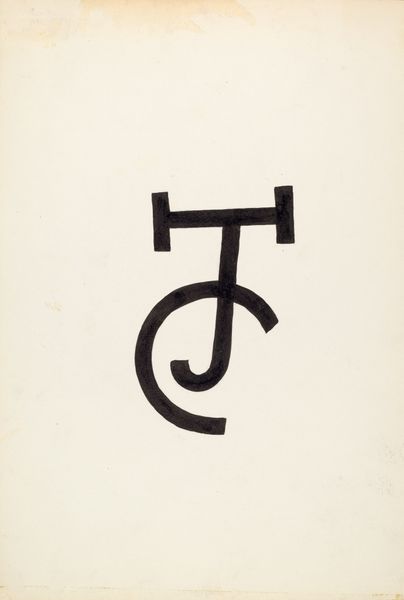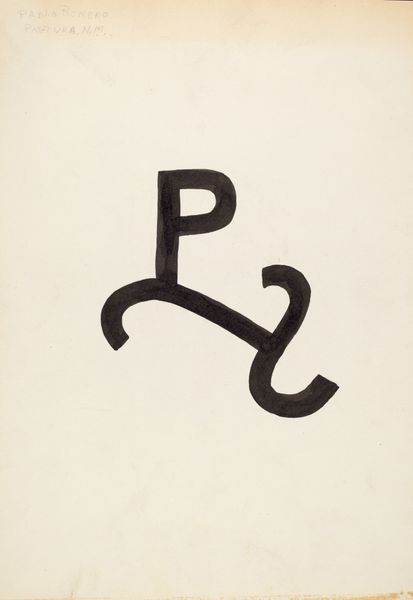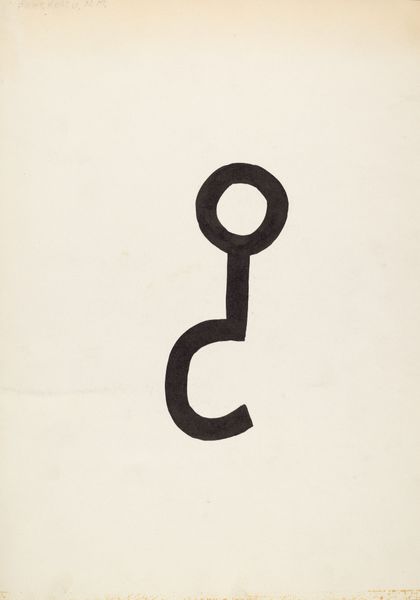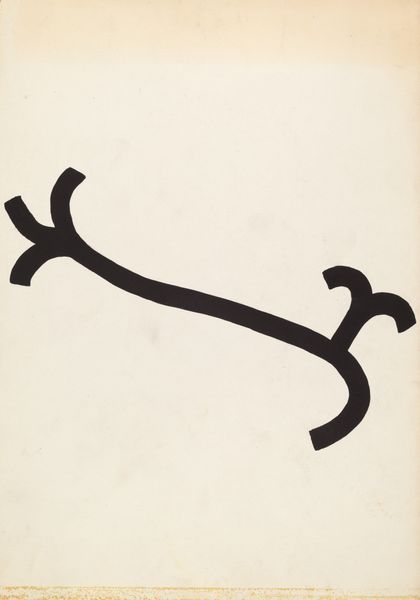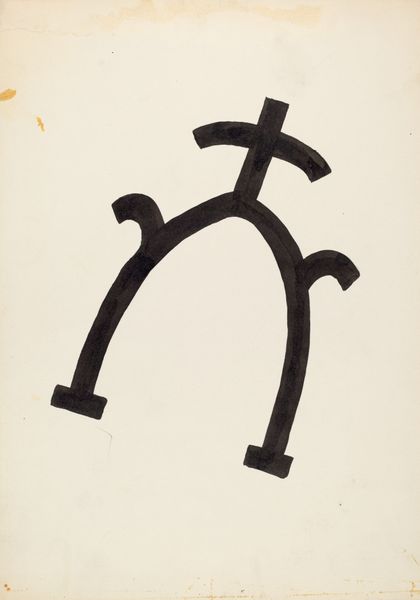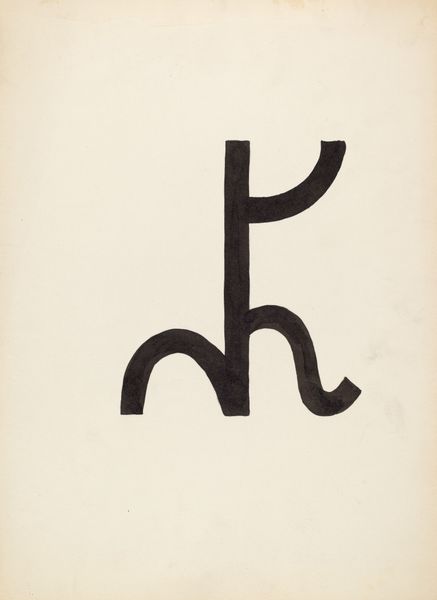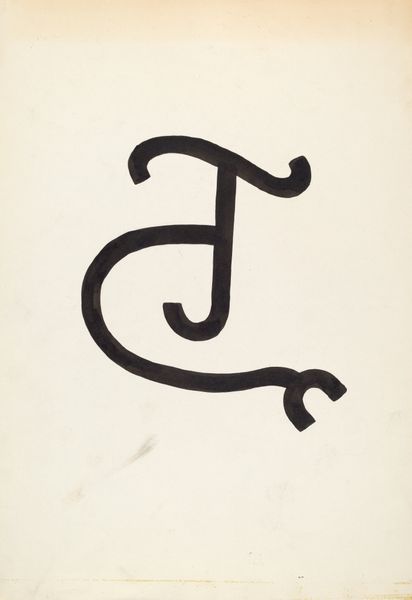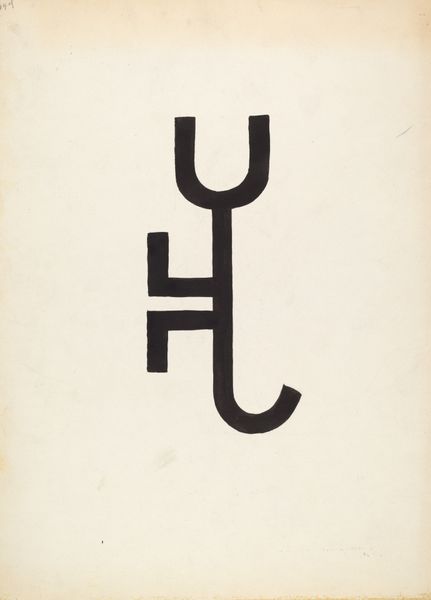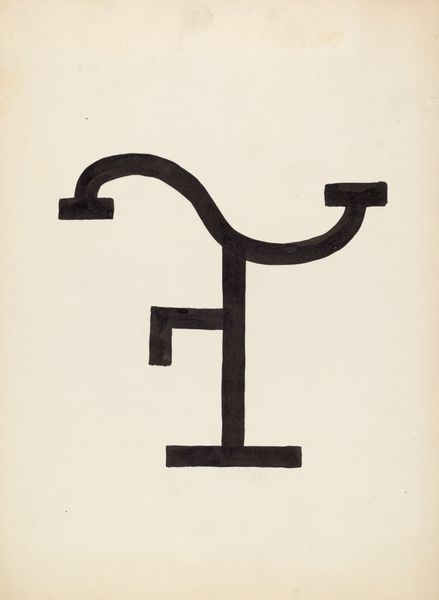
Dimensions: overall: 33.9 x 23.4 cm (13 3/8 x 9 3/16 in.)
Copyright: National Gallery of Art: CC0 1.0
Editor: This drawing, titled "Cattle Brand," dates back to around 1936, and it’s attributed to J. Henry Marley. It’s made with ink on paper, and what strikes me most is how abstract yet balanced it feels. What do you see in this piece from a formalist perspective? Curator: Primarily, I am drawn to the simplicity and the precision of line. Notice the stark contrast between the black ink and the bare paper. It's not merely representational; rather, it's an exploration of form and space. How would you describe the relationship between the lines themselves? Editor: They feel deliberate, almost architectural. There's a definite structure, but also a playfulness with the curves juxtaposed against the straight lines. Curator: Precisely. Consider the negative space around the mark. It's just as important as the inked lines themselves. It creates a tension, a visual rhythm that engages the eye. Can you see elements of semiotics at play in the work's symbolic structure? Editor: Semiotics? Hmm, not really. It looks like a minimalist symbol. Curator: While the lines coalesce into a symbol, how does that symbology depend on the artist's precise weighting and arrangement? Does one curve carry more significance, even visually, than another? Editor: The upper curves feel more deliberate and controlled, giving a feeling of enclosure. I wouldn't have noticed that if you hadn't mentioned their weight! Curator: Formalism guides us to a deeper understanding and appreciation of these elemental compositions and the relationship between object, artist and observer. It highlights that a focus on form can indeed expose more complexity. Editor: I appreciate how formalism looks beyond the literal to reveal a sophisticated interplay of structure, line, and visual language. Thanks for your insights.
Comments
No comments
Be the first to comment and join the conversation on the ultimate creative platform.
